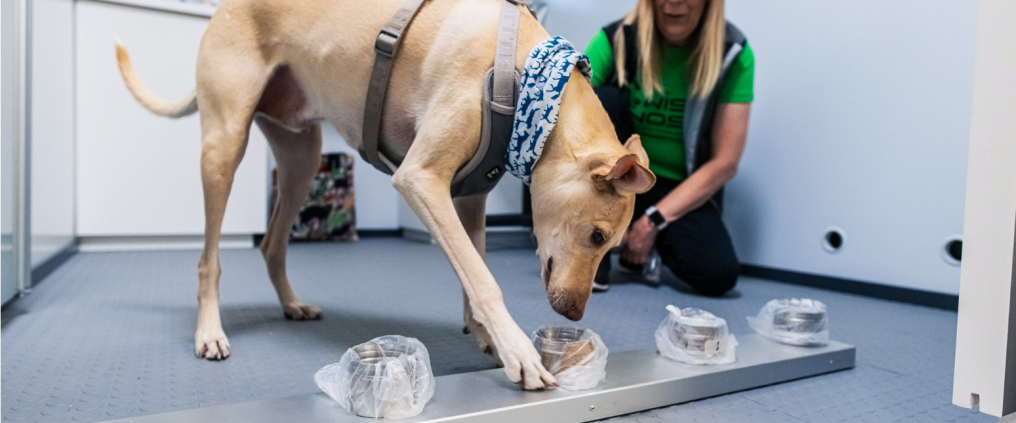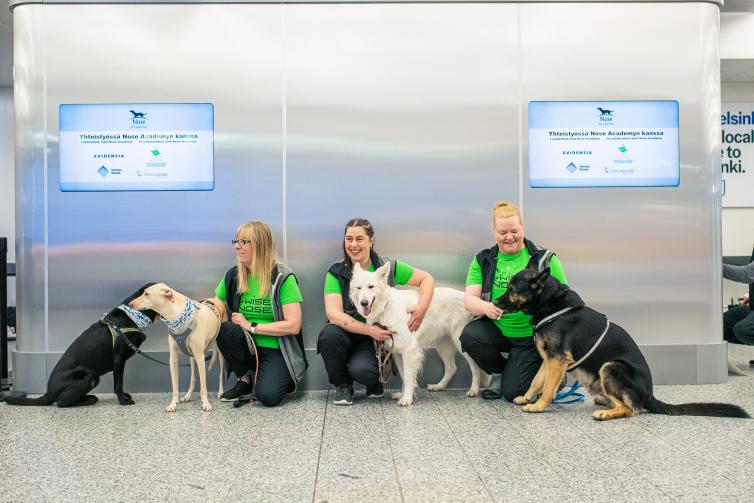Several studies have suggested that with training, dogs could be used to sniff out infections. Now, it’s finally being put to practice — and it only takes seconds.

Land in Helsinki, Finland, and you’ll be asked to dab your skin with a napkin. As you wait for a few minutes, the napkin will be sent to a separate booth where it will be tested. Except this testing equipment isn’t what you’d imagine — it has 4 paws and it’s fluffy.
After being presented with the napkin and other control scents, the dog starts sniffing and indicates when it has detected the virus (either by pawing, yelping, or just lying down). If this happens, the passenger will then be asked to take a free PCR test using a nasal swab.
However, the dog test might be even more accurate than the PCR itself. Dogs are able to identify COVID-19 from only 100 molecules, whereas the test equipment needs 18,000,000, says Helsinki airport. According to the researchers who oversaw the dogs’ training, the success rate is close to 100%, and they can identify the virus several days before any symptom has manifested.
It’s not the first time dogs have been suggested as a detection mechanism for COVID-19, and, in fact, our canine friends have shown remarkable prowess at detecting a range of diseases, from cancer to diabetes.
After several promising trials, it’s encouraging to see the idea actually being put to practice.
“As far as we know no other airport has attempted to use canine scent detection on such a large scale against COVID-19. We are pleased with the city of Vantaa’s initiative. This might be an additional step forward on the way to beating COVID-19,” says Airport Director Ulla Lettijeff from Finavia. Vantaa is the small city at the edge of Helsinki where the airport lies.
The dogs have been trained at Wise Nose, a Finnish organization specialized in training animals for scent detection. As far as we could find, there is no published peer-reviewed study of the Finnish dogs, but according to statements from officials, the results have been robust enough to deploy the dogs. Based on what is publicly available, the dogs’ results are comparable or superior to existing PCR tests.

At the moment, Wise Nose is training 16 dogs for the project, with four of them — ET, Kossi, Miina, and Valo — already working in shifts of two. The whole project is set to last 4 months (in the first stage) and cost €300,000 ($349,000 USD), substantially cheaper than other tests.
In the future, dogs may play an even bigger role in COVID-19 detection, but proper legislation must first be passed to allow this.
A similar but smaller trial has begun at the Dubai airport. Australia, France, Germany, and Britain are working on similar projects.






